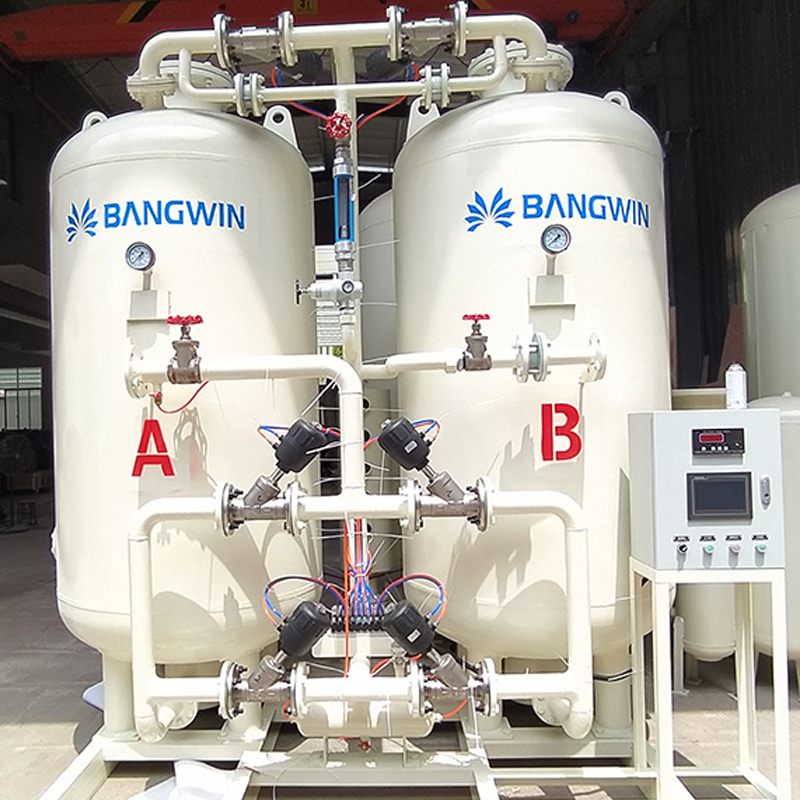-
WhatsApp / Mob : +86 156 5177 2521
-
Email : mrwin@cnbangwin.com
WhatsApp / Mob : +86 156 5177 2521
Email : mrwin@cnbangwin.com
PSA Oxygen Plant for Aquaculture: Smart Oxygen for Healthy Fish
Sep 24 , 20251. Introduction
2. Why Aquaculture Needs Pure Oxygen
3. Understanding the [PSA Oxygen Plant]
4. Product Description & Working Principle
5. Smart & Innovative Features
6. Technical Specifications
7. Key Advantages
8. Environmental and Economic Impact
9. Case Study: Smart Fish Farm
10. Applications
11. FAQs
The need for consistently high and high-purity oxygen for fish and shrimp farms worldwide is increasing every year in the developed aquaculture sector. The integrated or closed systems of modern fish hatcheries and farms demand constant dissolved-oxygen levels, and a locally installed [PSA oxygen plant] can provide oxygen on demand 24/7 at a much lower cost and carbon footprint.
• Ensures dissolved oxygen (DO) levels never drop below the critical 5 mg/L threshold.
• Allows higher stocking densities and faster growth rates for farmed fish.
• Helps control disease outbreaks and enhance water quality.
The PSA oxygen generator is a highly automated, compact device based on PSA (Pressure Swing Adsorption) technology for nitrogen removal from the air to produce [90–95% pure oxygen], which is easily used in [aquaculture oxygenation].
l A twin tower arrangement of molecular sieves filled with zeolite which selectively adsorbs nitrogen from the air.
l The automated valve logic then cycles the PSA module pressure between high and low pressure to desorb oxygen.
l No chemicals or heat are involved. The system needs only electricity and intake air to operate.
l IoT Monitoring for D.O. Levels: Farmers can track the dissolved-oxygen (D.O.) levels through a mobile app and get automated alerts.
l AI Flow Control: Dynamic output of oxygen produced according to the biomass of the aquaculture species and real-time DO data.
l Hybrid Energy Option: The PSA system can be integrated with solar panels or windmills for standalone, off-grid power.
l Purity: 90–95%
l Flow Rate: 5–500 Nm³/h
l Pressure: 0.1–0.5 MPa
l Power Consumption: 3–50 kW
l Reduce oxygen supply cost by up to 40% over liquid oxygen tank trucks.
l Feed conversion ratio (FCR) improvement and better fish weight gain.
l Simple, continuous operation, 24/7, with minimal scheduled maintenance.
l Zero chemical emissions and a very small carbon footprint.
l Suitable for [recirculating aquaculture systems (RAS)].
l Eliminates the need for transportation and oxygen cylinders.
A shrimp farm in Peru installed a 150 Nm³/h industrial size [PSA oxygen generator], which has improved survival rates by 20% with simultaneous reduction in power cost using solar-assisted hybrid energy.
l Fish hatcheries and nurseries
l Prawn and shrimp farms
l Intensive salmon or tilapia farms
l [RAS aquaculture] farms
l Supplementary oxygen in emergencies during algal blooms
Q1: How often do the molecular sieves need to be replaced?
A: Replacement is normally needed every 4–6 years. It depends on the ambient air quality.
Q2: Can it run continuously?
A: Yes, PSA systems are designed for 24/7 operation in [aquaculture applications].
